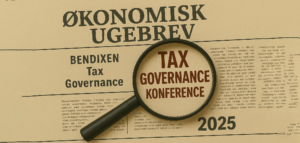Fra Natixis:
2021 will go down in history as the year the US got busy on climate risk regulation – specifically as to how it affects the financial markets. One of President Biden’s first executive orders focused on climate change and its impact on finance. Action soon followed by the Federal Reserve, Securities and Exchange Commission (SEC), and Department of Labor (DOL) as they announced committees, task forces, and proposed rulemakings.
Keeping track of who is doing what and when is complicated. To keep you updated, this article goes over what has happened, why it happened, and what to expect next. Starting with Biden’s executive order, which triggered agency action, we provide a summary on this directive for government agencies to report their strategy and climate-related financial risks. Next, we go over what the Federal Reserve, SEC, and DOL are doing to address risk. Finally, we look at climate risk legislation Congress is currently working on.
Summary of Executive Order 14030
Executive Order 14030 calls for “a comprehensive, government-wide strategy” on climate-related financial risk. First, the order directs White House policymakers to develop a strategy for identifying and disclosing climate-related financial risk to government programs, assets, and liabilities within 120 days. This strategy is to identify public and private financing needed to reach economy-wide net-zero emissions by 2050. Its goal is to limit global average temperature rise to 1.5 degrees Celsius.
Second, the order tasks the Financial Stability Oversight Council (FSOC) and its member agencies to assess climate-related financial risks to the federal government and the overall US financial system. Third, the order directs the DOL to identify regulatory actions under the Employee Retirement Income Security Act of 1974 (ERISA) and the Federal Employee Retirement System Act to assess the threats climate risk may pose to savings and pension plans. This includes reconsidering rules that prohibit investment firms from considering environmental, social, and governance (ESG) factors, including climate-related risks, in investment decisions related to workers’ pensions.
The Federal Reserve
Two committees were established by the Federal Reserve to evaluate climate-related financial risk. One is the Supervision Climate Committee, formed in January 2021. This committee examines how climate change affects individual banks supervised by the Federal Reserve. The second, established in March 2021, is the Financial Stability Climate Committee. It is tasked with identifying and addressing climate-related risks at a macro prudential level, to ensure the stability of the financial system.
The new rule proved disruptive and had a chilling effect on ESG investments in ERISA plans. Plan sponsors started pulling out or refusing to put in anything related to ESG, even if the investment met all of their investment criteria. Especially concerning was the outright ban of ESG as a Qualified Default Investment Alternative (QDIA). QDIAs are the investments fiduciaries choose to default participants’ investments into if the participants haven’t made a choice on their own. If a QDIA isn’t selected, a participant’s retirement savings would default into a money market account, which typically offer low rates of return.
On March 10, 2021, the DOL released a statement of non-enforcement so it can reconsider and rewrite the rule. The DOL stated its plans for releasing a new rule for comment in September. A problem to note with the original rule around using ESG is that the wording allowed Republican and Democratic administrations to issue guidance that either made it less burdensome for plan sponsors to use ESG or worded it to scare plan sponsors away. The DOL’s goal for the new rule is to end this back-and-forth uncertainty of using ESG in ERISA plans.
Legislation in the works
Legislation in Congress is present. However, due to the tight margins in both the House and Senate it is unlikely a climate bill will pass anytime soon. The House did pass H.R. 1187, titled Corporate Governance Improvement and Investor Protection Act. Made up of five bills, it passed 215-214. But H.R. 1187 will not make it to the Senate floor, as it received no Republican support. The five bills in H.R. 1187 are the ESG Disclosure Simplification Act, the Shareholder Political Transparency Act, the Greater Accountability in Pay Act, the Climate Risk Disclosure Act of 2021, and the Disclosure of Tax Havens and Offshoring Act.
The Senate has introduced a few bills, but again they are unlikely to get floor time. The bills include the Climate Risk Disclosure Act (the companion bill to the House bill of the same name) and the Financial Factors in Selecting Retirement Plan Investment Act. This bill is in response to the previously mentioned DOL rule on using ESG in retirement plans and would amend the Employee Retirement Income Security Act of 1974 to permit retirement plans to consider certain factors in investment decisions. There is also a companion bill in the House with the same name.
Conclusion
The Biden administration is not likely to issue further executive orders in 2021, and we will probably not see a climate bill pass Congress and make it to the president’s desk. The real movers of climate disclosure will come from the agencies. In the fall, we will know more about what agencies like the SEC and DOL will propose for climate risk rulemaking. While it is uncertain at this time whether the financial industry feels these agencies have gone too far or not far enough, one thing is certain – the year 2021 will go down in history as the year the US got busy on climate risk regulation.








